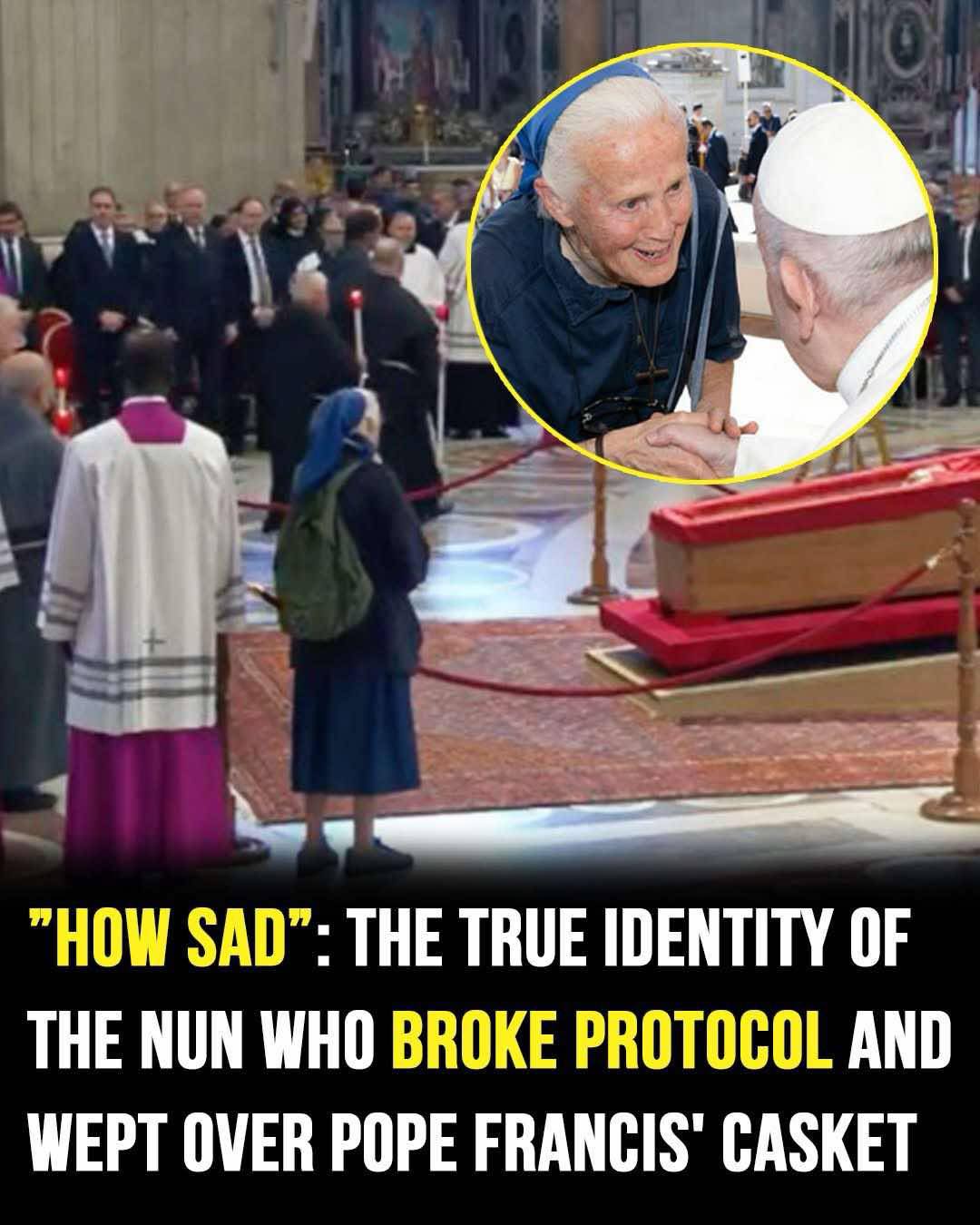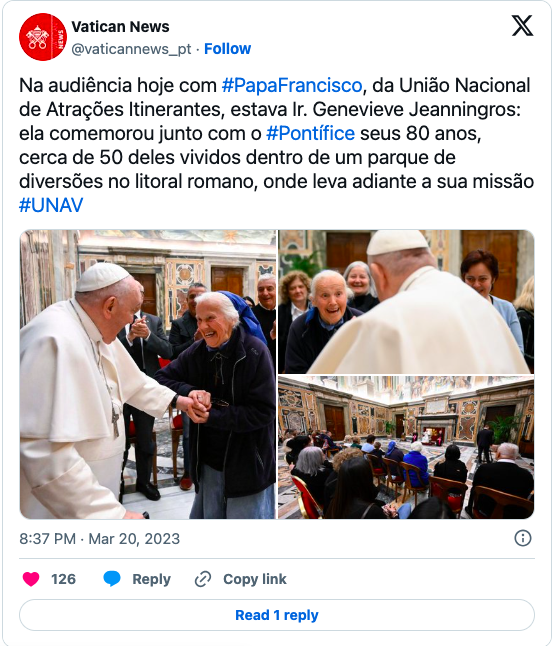In a solemn sea of black robes, golden vestments, and rigid protocol inside St. Peter’s Basilica, one small figure stood out—not for what she wore, but for what she felt. One silent act of love, deeply personal and breathtakingly human, stole the world’s attention at Pope Francis’ funeral.
It wasn’t a president or a prince who broke the rules that day. It was an 81-year-old nun with a green backpack slung over her shoulder and tears streaming down her cheeks. Sister Geneviève Jeanningros didn’t come to impress anyone. She came to say goodbye to her friend.
And in that simple, rule-breaking moment, she captured the heart of the world.
A Quiet Goodbye That Shouted to Heaven
Pope Francis, born Jorge Mario Bergoglio, passed away on Easter Monday, April 21, at the age of 88. Over 48,000 people came to file past his coffin. Dignitaries bowed. Cardinals wept. Cameras clicked. But it was Sister Geneviève—humble, tearful, unwavering—who gave the goodbye that everyone would remember.

Decades before the world called him “Pope,” she called him “Brother Jorge.” They met over forty years ago in Buenos Aires, bound by a shared mission: to walk beside the forgotten—the homeless, the sick, the outcasts, even circus performers. Their bond only deepened when Bergoglio became Pope. Despite the pomp of the papacy, their Wednesday meetings continued like clockwork: quiet conversations, laughter, a simple meal shared with those who had no other place to go.
So when Sister Geneviève approached the coffin, slipping out of formation and into history, it wasn’t a breach of protocol. It was a promise kept.
A Life Woven with Courage and Grief
Sister Geneviève’s life had long been stitched with sorrow and resilience. During Argentina’s Dirty War, her aunt—another nun, Léonie Duquet—was kidnapped and murdered. Francis, himself a child of immigrants and oppression, understood her grief intimately. They stood together through personal tragedies and public battles, champions for those the world too often forgets.

When people first saw Sister Geneviève lingering by the Pope’s coffin, many thought she had “broken Vatican rules.” Technically, she had. But what most didn’t know was that she had been quietly granted special permission—a gift reserved not for kings or presidents, but for a friend whose loyalty had been tested across a lifetime.
No fancy garments. No titles announced. Just a nun, a backpack, and a heartbreak too big to hide.
More Than a Farewell—A Testament
As images of Sister Geneviève went viral—her simple figure standing beside the grand coffin—something profound began to spread: a reminder that real greatness isn’t measured by status but by love lived quietly and fearlessly.

In one photo, you can almost hear the silence around her, the history, the memories shared between two old friends. No staged speeches. No grand displays. Just presence.
“She went up to her friend like she always did on Wednesdays,” one mourner said. Only this Wednesday was different. This was a farewell whispered with tears instead of words, with courage instead of ceremony.
In a Church often accused of clinging too tightly to tradition, Sister Geneviève and Pope Francis showed another way—one paved with tenderness, humility, and fierce compassion.
And as her small, grieving figure lingers in photographs seen around the world, one truth echoes louder than any hymn sung that day:
Sometimes, the holiest goodbyes are the quietest ones.

